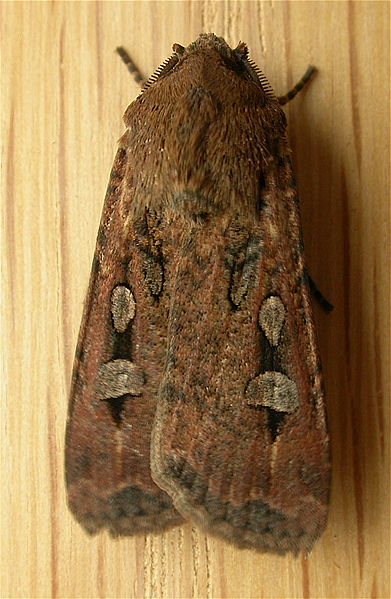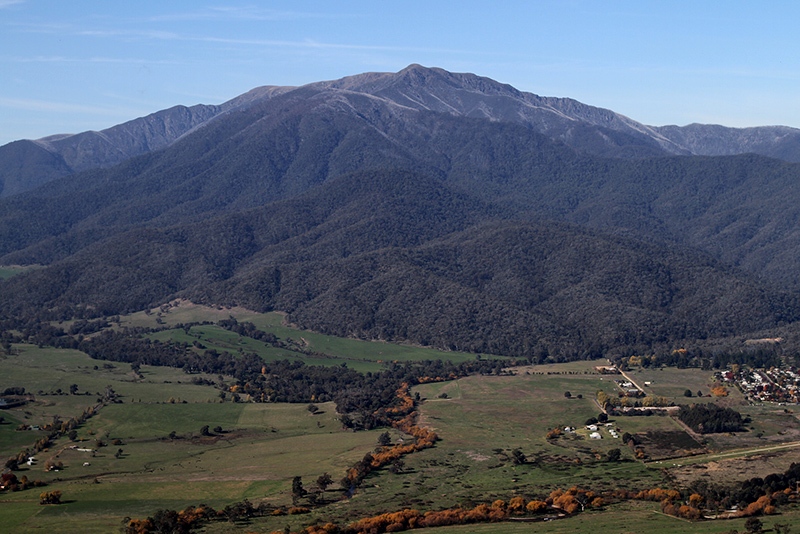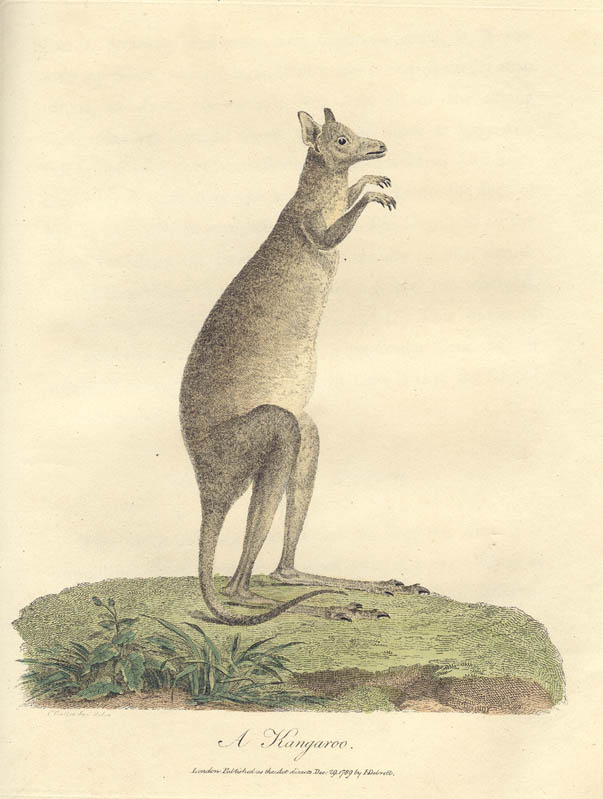September 15 - 21, 2013: Issue 128
Bogong Moth Time Approaches – Spring in Australia – Eastern Coasts
There have been so many insects and moths around already that we’re just waiting for the onslaught of the Bogong moth. Although some squirm when these beautiful insects and their season approaches, they are part of our natural balance and a sure sign that Spring is moving towards Summer.
The Bogong moth (Agrotis infusa) is a temperate species of night-flying moth notable for appearing in large numbers around major public buildings in Canberra, the capital city of Australia, during spring (late September to November) as it migrates to the High Plains. The moth's name 'Bogong' is the same as the mountain ranges on the High Plains i.e. the Bogongs, and may mean 'Big Fella' hence the name for the mountains, or it may have been the name for the Moth which has been accorded to the mountains as their locale.
 Indigenous Australians living in south eastern Australia were known to have feasted on the moths, benefiting from their rich fat reserves, particularly during the summer when the moths were plentiful. The moths were either killed or stupefied by the heat and smoke of torches, and then their bodies collected. Many Aboriginal band groups from the lowlands traveled to exploit this tasty, high protein and high fat resource, and so at any time during the summer, the population of human foragers could be upwards of 400 individuals. Moth collection activities were accompanied by appropriate ceremonies and rites of intensification, and most nearby groups held title to their own pitch for harvesting. Once collected, the moths were generally roasted and eaten whole. This cultural use is no longer practised. The term "Urri Arra" refers to the Bogong moth feasts that these Aboriginal people held.
Indigenous Australians living in south eastern Australia were known to have feasted on the moths, benefiting from their rich fat reserves, particularly during the summer when the moths were plentiful. The moths were either killed or stupefied by the heat and smoke of torches, and then their bodies collected. Many Aboriginal band groups from the lowlands traveled to exploit this tasty, high protein and high fat resource, and so at any time during the summer, the population of human foragers could be upwards of 400 individuals. Moth collection activities were accompanied by appropriate ceremonies and rites of intensification, and most nearby groups held title to their own pitch for harvesting. Once collected, the moths were generally roasted and eaten whole. This cultural use is no longer practised. The term "Urri Arra" refers to the Bogong moth feasts that these Aboriginal people held.
A town, Bogong, in the Australian state of Victoria has been named after the moth. The Bogong moth Agrotis infusa is common throughout southern Australia. These brown to blackish moths have a wingspan of approximately 45 millimetres. Adults make lengthy migrations to spend summer months in large congregations in caves and crevices of rocks in the Australian Alps, notably in the region of the Bogong High Plains in Victoria. They are attracted to lights, like those seen at night in the Sydney and Canberra areas. They were notable in broadcasts of the Sydney 2000 Olympics Opening Ceremony on 15 September. Large numbers may enter houses or other buildings to rest during the day. In winter, adults disperse to pastures across inland New South Wales and Queensland to lay their eggs.
This subfamily are characterised by their stoutly built bodies covered with long dense scales. The larvae, collectively known as cutworms, are also stoutly built. They feed on a wide variety of plants (see list below). The name cutworm comes from the larvae's habit of cutting off plant parts during the night which they drag back to their burrows in the soil as food. The Bogong moth is univoltine (i.e. it has one generation per year). The Lepidopteran life cycle consists of four stages; ova (eggs), several larval instars (caterpillars), pupa (cocoon), and imagines (adults).
Photo: Donald Hobern from Canberra, Australia
Bogong moth. (2013, March 5). In Wikipedia, The Free Encyclopedia. Retrieved from http://en.wikipedia.org/w/index.php?title=Bogong_moth&oldid=542256792
VISITATION OF MOTHS . Little Damage Done
Entomologists of the Department of Agriculture are investigating a plague of moths which has afflicted many parts of the State in recent weeks. The mothshave appeared in amazing numbers in the Mallee, the Wimmera, the Mornington Peninsula, and even in some of the outer suburbs. The moths in the Wimmera, which have caused some concern, are cram-bid, or grass moths, in the main, but so far very little dam-age has been caused. An entomologist said yesterday that they were confining their attentions almost entirely to "rubbish," though there had been one or two instances of their eating wheat. Some of the species have not yet been identified, and they are being bred in the department's laboratory for purposes of identification. It is at present considered unlikely that the plague will develop to serious proportions. It is expected that rain will drown the moths in the ground. A report from Queenscliff states that at the week-end moths arrived in huge clouds at sunset, and many died, having to be swept up from floors of houses and from paths.
Seagulls' Feast
What must have been the first "hatch" of the Bogong moth emerging from the tea-tree at Beaumar is is related by Mr.C. W. Wilson, proprietor-manager of Scott's Hotel, Melbourne. On Sunday evening at dusk Mr. Wilson saw a large flock of silver gulls above the shoreline wheeling, "backpedalling," and somersaulting in mid-air. Their antics were caused by their enthusiasm for a large swarm of Bogong moths, drifting out to sea in the still air. Some of the gulls were so gorged with the moths that they could scarcely fly, others seemed insatiable.
The Bogong moth (Euxoa infusa) has in countless numbers stopped trains, ob-scured lighthouse lights, and wrecked in-numerable gas mantles. When the moths emerge after heavy rain in early winter they swarm in millions. The aborigines used to make special trips to the Australian Alps to gorge on this delicacy. They occur in masses in rocky crevices and caves; hence the names Bogong High Plains and Mountains in Gippsland. VISITATION OF MOTHS. (1939, May 17). The Argus (Melbourne, Vic. : 1848 - 1957), p. 3. Retrieved from http://nla.gov.au/nla.news-article12129340
THE BIG BOGONG. A Neighbour of Kosciusko. (BY J. J. B.)
The southern tablelands are rich in items of physiographical interest, for among other distinctions they embrace the highest mountain in Australia-Kosciusko. Not with-standing this prestige, Kosciusko is closely pressed when it comes to comparing altitudes above sea level; in far, the main range on which Kosciusko rests is studded with peaks culminating in rocky knolls, which, though not very conspicuous, run very close to Kosciusko on the altitude scale. There is no mountain, however, in the territory, which compares with the "Big Bogong"-as it Is familiarly known, or Jagungal as it is called in official circles-in downright majesty and impressiveness. Strangely enough, It is situated on a spur at a distance of four miles westerly from the main range, and this fact adds to its uniqueness. Its altitude Is 6755 feet, or 575 feet less than that of Kosciusko, but whereas the latter is located in the midst of a confusion of high altitudes, the Big Bogong stands out in singular glory. As the crow flies, the Big Bogong is distant twenty-two miles, and bears almost due north from the more famous summit.
In appearance the subject of this article gives the sightseer the Impression of restful grandeur. True, the Immediate summit and part of the western face is rocky, but the general effect Is not one of ruggedness. It stands as a huge monument facing the west, bare of timber on the upper slopes, grassed to within a few feet of the trigonometrical station, and generally conveying a suggestion of guardianship over the flocks and herds which frequent the grassy plateaux and valleys on all sides during the summer months.

Mount Bogong, at 1,986 metres (6,520 ft) the highest mountain in Victoria. This is the western flank towering above the town of Mount Beauty, taken looking east from Sullivans Lookout on the Tawonga Gap Rd. Victoria, Australia. Photo by John O’Neill, 9 May 2013
ORIGIN OF THE NAME.
Various theories are given as to the origin of the name Bogong, the most popular being attributed to the aboriginal name for a huge moth, which is to be found around the summit at certain times of the year. This may have some truth In it, but the fact remains that there are numerous mountains in southern New South Wales and that part of Victoria adjacent, bearing the name of Bogong in some combination or other. There is the Rocky Bogong, Grey Mare's Bogong, and Dicky Cooper Bogong, all within ten miles, and there are the "Bogongs"-a nest of peaks situated easterly from Tumut.
The first name "Big" does not, it is thought, refer to big moths, but to the fact that the mountain is unusual, and therefore my the story is that Bogong in the dialect of southern aborigines euphoniously indicated a conspicuous mountain.
The Big Bogong is easily scaled on horse-back to within a few feet of the summit, the culminating point being an outcrop of andesite piercing the granite surroundings. Here a trigonometrical station has been erected, consisting of the usual cairn of stone supporting a post of squared timber. The galvanised iron vanes have been blown away by the force of wind and driven snow. A flash of lightning, some three or four years ago, struck the guy wire supporting the upright, and blast-ed out some 30 or 40 tons of the hard rock, scattering fragments as if by heavy explosive some hundreds of yards.
A LANDSCAPE OF PEAKS.
From the summit one may gaze for scores of miles in any direction until the distant landscape melts into space. To the north, Tabletop Mountain, a basaltic peneplain, Im-mediately attracts attention; to the north-west, the Round Mountain and Black Jack are prominent; to the south-west, Rocky and Grey Mare's Bogongs are conspicuous; and southerly, Dicky Cooper's Bogong appears like a pimple of rock behind which progressively one's eyes can discern Adams and Twynams' peaks and other points which hide or confuse the real Kosciusko; to the south-east the Kerries, which actually comprise a huge swell in the range, are easily seen. Beyond all these in any direction the landscape extends to beyond the power of the eye to discern.
In the Immediate foreground, 1000 feet lower than the summit, are extensive areas of grass land, with belts of timber and plain alternating. The Geehi River rises on the south-east, and the Tumut River immediately under the mountain an the west. Further westerly the Tooma River-named the Toolong locally-rises, and after meandering through plain and timber alternatively, eventually joins the Upper Murray. There are approximately 125,000 acres of good summer grazing country in the vicinity held by graziers under leasehold, and used extensively for re-lief pastures In times of drought.
Some day this territory will become the sanitorium for the Riverina, where relief from summer heat can be gained. Then the Big Bogong will surely be appreciated for its most remarkable appearance; for while there may be many mountains In Australia more rugged and forbidding, there is no other mountain like the Big Bogong. Patriarchal, he faces the sunburnt western plains, kindly visaged, inviting, beautiful in rounded simplicity. THE BIG BOGONG. (1930, June 14). The Sydney Morning Herald (NSW : 1842 - 1954), p. 19. Retrieved from http://nla.gov.au/nla.news-article16679141
Bogong - Lyricals
The hills and mountains here sing that they are a way of trees. The dreams of songnames we hear first are all names of trees. A hill is named by what flourishes in it. Each hill, in every grain, is a meaningbeing. BunyaBunya is a mountain of bunya-bunya trees. These mountains forms in flow alike wave rhythms reveal they are a flow of trees. They are places of Bunya, Coobah. What thrives there is what they be. As it is and has always been in the measures of the measures of meanings being.
‘BogongBogong.’ echoes from further south and we can hear, and know, these are mountains where Bogong, a kind of moth, issues from. This song is Bogong from Bogong. Being from meaning is pure and brilliance in this place, and all its places. MurrIrrillee is a spirit filled garden, a Sanctum Temple in every measure.
We pad alongside a bay that dreams it will become ‘Caareell’. ‘Murrnong’ and ‘Belah’ dream in the silty edges along the low banks of earth. Small wiry trees with whitegreen clouds of leaf dream ‘Yarran MurrMurr’ in rising land behind these Murrnong and Belah, ‘murrMulga murr Mulga’, with roots that grow out of the salty mud dream before them. Brolga, cormorant, heron, pelican and curlew wade and feed in this bays’ edges.
“This is where the curlew were flying to.” Ulmna songs.
Cassowary run through thick scrub away from the tidal edges. Pununnarras’ eyes follow the flights of vermillion and bright blue wings amongst higher canopy. We can hear the dull thumping of padded creatures making rhythms over land through the sumunah shimmering trees. Gold sparks rise and drift east from this earth, as a spirit mist we can see, even in shaded groves.
A giant red trunked, dark green leafed tree is the elder of all trees in MurrIrrillee. It is songnamed the Murr tree or the Red River Gum. The meaning in this song comes from the turning in MurrIrrillee verse when waters flood the belly of this place and stream in season among red river tree root. This large red flow has made rise this flow of red Murr tree. They are kismet. Everywhere we go through the forests the blood through trees of many colours and widths and heights will be Murr tree blood. The colour of leaf may be different, its shape and size and kind may vary, but the taste will be the same. The spread of cloud like treecrown and the places they gether in, by river banks, in snows, through valleys and across open plains, will mark their changes, but they will all be blood of the Murr tree. They have all been sung from the Murr tree tide and drip Murr tree resinous oil. They are Yarran, Mulga, Myall and Mallee, and they are the cascade a font risen fromMollinUmrill bears out. This is the first meaning-being of MurrIrrillee. This gardens’ first dream, its soulname, means ‘flow of meres of trees’... MurrIrrillee.
This makes its breath, that which fills songname MurrIrrillee, pure murr, or, as it is sung in my homeland, pure myrrhh. And this is how MollinUmrill, a salty womb for such a green fountain, has breathed out myrrh murr, the breath made by trees. Murr tree is an Onkaparinga, a mother tree. Beneath its green boughs live all others, acacia, mallee meres, bunyabunya, and the furred and doe eyed who cleave to Murr trees blue haze air.
 KhungUru is one of these doe eyed creatures. They are buff and red brown in fur. They have a long thick tail, two large feet and two small paws halfway up their chests with which to cup their young or hold their food. The large tail propels them away from and to the ground when they move.
KhungUru is one of these doe eyed creatures. They are buff and red brown in fur. They have a long thick tail, two large feet and two small paws halfway up their chests with which to cup their young or hold their food. The large tail propels them away from and to the ground when they move.
They are dreamed WhallUru if they live in mountains, and Whallibi if they hop through green vales, are PataGoRang (paddymelon) if they prefer the ferns and fruits of warmer ravines.Tamma is songname for these creatures in west measures of MurrIrrillee, and Leger the namesong of their inland cousins. They can be small and large and larger. They can be resplendent in forests and across rocks or bound as one wave, one two, one two, across great red plains. They are one to one, kismet, with MurrIrrillee garden.
We followed the largest red furred ones through a forest rain fell thick in, teeming around us. This green reminded me of the jungles of Ullumunn. All greens are here. The large flowers, of velvet petal, are too warm to be in snow. The matted canopy is filled with birds of brilliant colours and almost blocks the suns’ slants down onto leaf covered ground.
The KhungUru bound on paths that wend through the raining forests’ hush. You can hear them coming through the tall gum beams, flitting through the arches of green light under their canopy. They lead us towards the belly of MurrIrrillee. ‘Come to CorroBoree.’ they call to Pununnarra, Ulmna and Sutude. ‘Come to Communion.’ their bloods sing into the air as they bound forward among the beams that are trees.
Extract from Coming Home I, Village Green, Copyright A J Guesdon. 1985-2013.